
How to Use BLS 35A Mini V2 4-in-1 ESC: Examples, Pinouts, and Specs
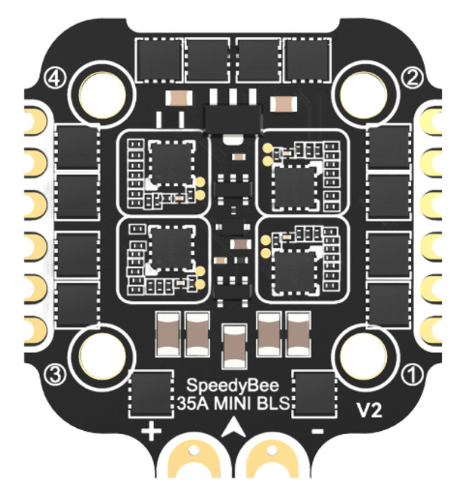
 Design with BLS 35A Mini V2 4-in-1 ESC in Cirkit Designer
Design with BLS 35A Mini V2 4-in-1 ESC in Cirkit DesignerIntroduction
The BLS 35A Mini V2 4-in-1 ESC by SpeedyBee (Part ID: ESC) is a compact and efficient electronic speed controller designed specifically for multirotor drones. This component integrates four ESCs into a single unit, significantly simplifying wiring, reducing weight, and improving overall build efficiency. It is capable of handling up to 35A of continuous current per channel, making it suitable for high-performance drone applications. The ESC supports smooth motor control, a wide range of motor types, and advanced protocols for enhanced responsiveness.
Explore Projects Built with BLS 35A Mini V2 4-in-1 ESC
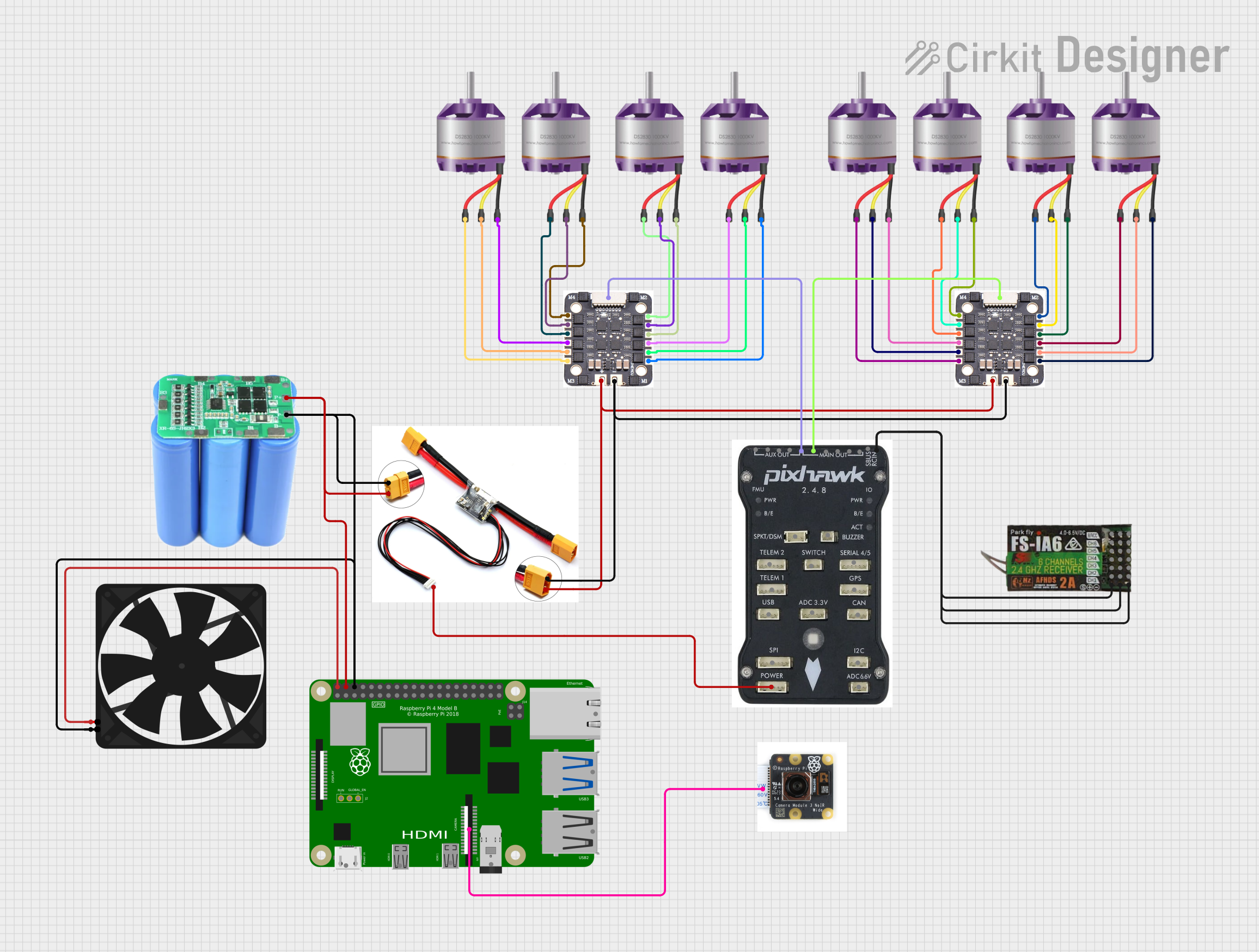
 Open Project in Cirkit Designer
Open Project in Cirkit Designer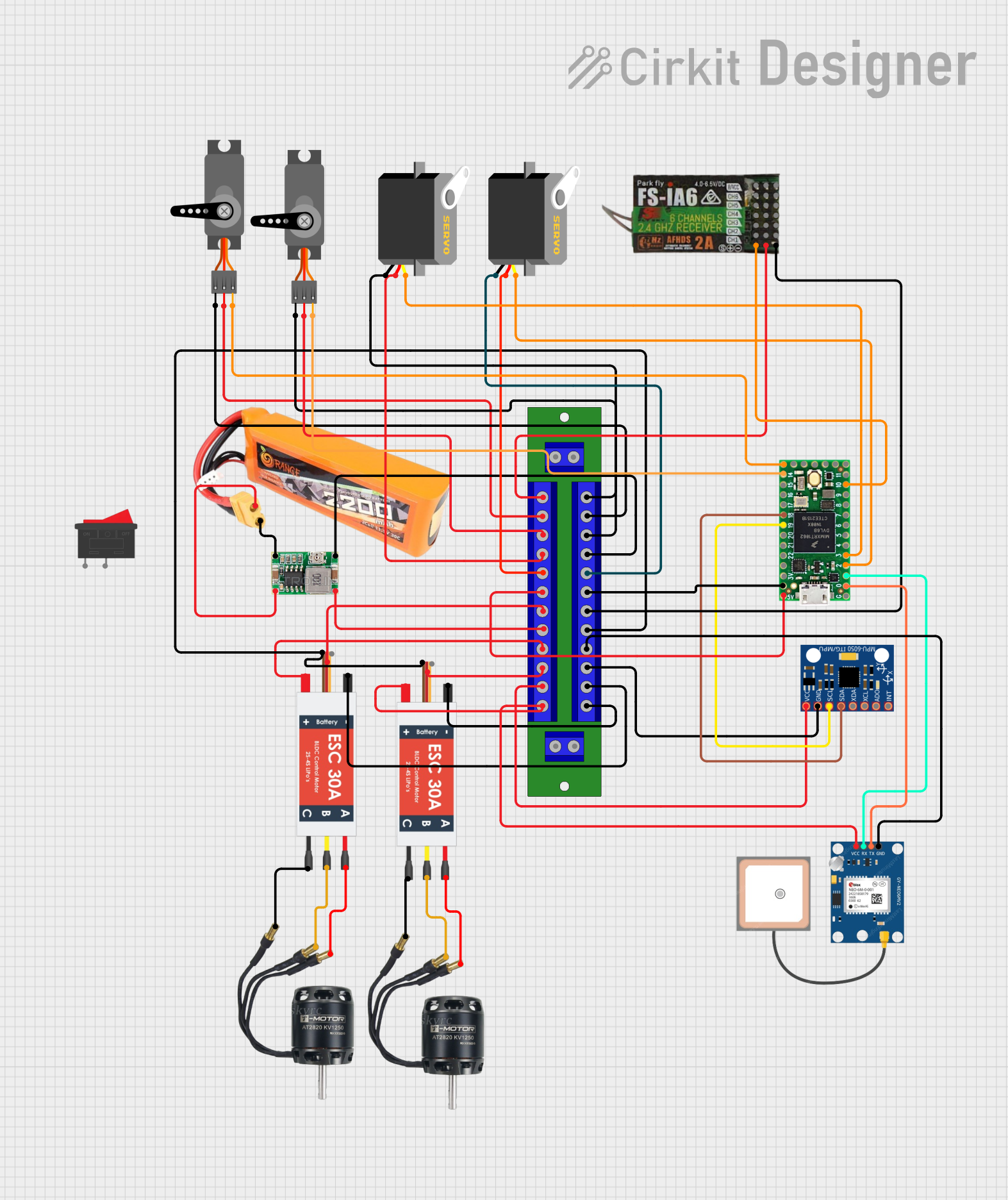
 Open Project in Cirkit Designer
Open Project in Cirkit Designer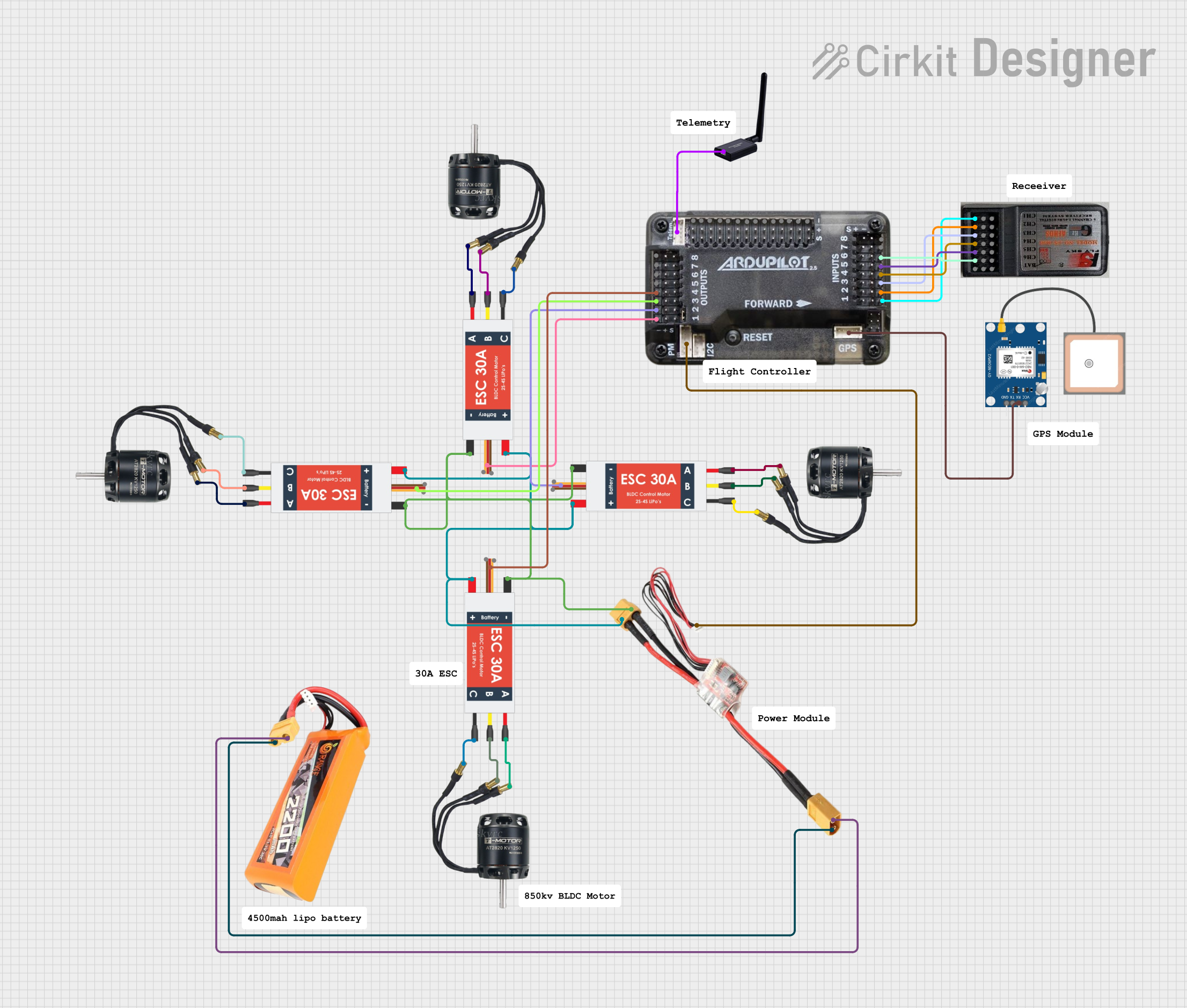
 Open Project in Cirkit Designer
Open Project in Cirkit Designer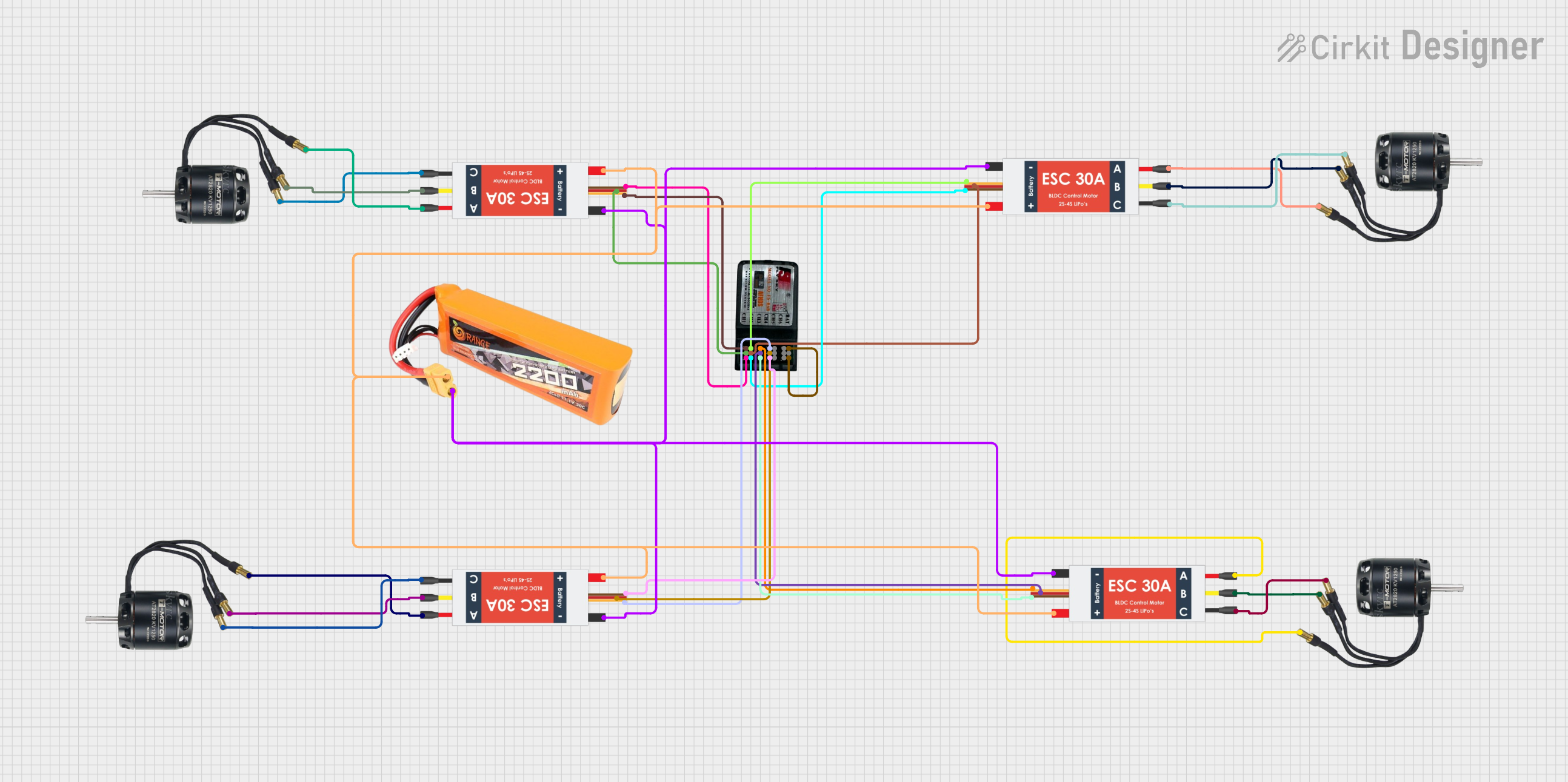
 Open Project in Cirkit Designer
Open Project in Cirkit DesignerExplore Projects Built with BLS 35A Mini V2 4-in-1 ESC

 Open Project in Cirkit Designer
Open Project in Cirkit Designer
 Open Project in Cirkit Designer
Open Project in Cirkit Designer
 Open Project in Cirkit Designer
Open Project in Cirkit Designer
 Open Project in Cirkit Designer
Open Project in Cirkit DesignerCommon Applications and Use Cases
- Multirotor drones (e.g., quadcopters, hexacopters)
- FPV (First-Person View) racing drones
- Aerial photography and videography platforms
- Lightweight and compact drone builds
- Hobbyist and professional drone projects
Technical Specifications
The following table outlines the key technical details of the BLS 35A Mini V2 4-in-1 ESC:
| Parameter | Specification |
|---|---|
| Continuous Current | 35A per channel |
| Burst Current | 40A (10 seconds) |
| Input Voltage Range | 2S–6S LiPo (7.4V–25.2V) |
| Firmware | BLHeli_S |
| Protocol Support | DShot150, DShot300, DShot600, Multishot |
| Dimensions | 36mm x 36mm |
| Mounting Hole Spacing | 20mm x 20mm (M3 screws) |
| Weight | 10g |
| Motor Output Channels | 4 (4-in-1 design) |
| BEC Output | None |
| Operating Temperature | -20°C to 80°C |
Pin Configuration and Descriptions
The BLS 35A Mini V2 4-in-1 ESC features a compact pinout for easy integration into drone builds. Below is the pin configuration:
| Pin Name | Description |
|---|---|
| VBAT | Main power input (connect to LiPo battery positive) |
| GND | Ground connection (connect to LiPo battery negative) |
| M1 | Motor 1 output |
| M2 | Motor 2 output |
| M3 | Motor 3 output |
| M4 | Motor 4 output |
| Signal 1 | Signal input for Motor 1 |
| Signal 2 | Signal input for Motor 2 |
| Signal 3 | Signal input for Motor 3 |
| Signal 4 | Signal input for Motor 4 |
| Telemetry | Optional telemetry output (if supported) |
Usage Instructions
How to Use the Component in a Circuit
- Power Connection: Connect the VBAT pin to the positive terminal of your LiPo battery and the GND pin to the negative terminal.
- Motor Connections: Solder the motor wires to the corresponding motor output pads (M1, M2, M3, M4).
- Signal Connections: Connect the signal input pins (Signal 1–4) to the flight controller's motor output pins.
- Telemetry (Optional): If your flight controller supports telemetry, connect the telemetry pin to the appropriate input on the flight controller.
- Mounting: Secure the ESC to your drone frame using M3 screws and ensure proper insulation to avoid short circuits.
Important Considerations and Best Practices
- Cooling: Ensure adequate airflow over the ESC to prevent overheating during operation.
- Firmware Updates: Use BLHeli_S software to update the firmware and configure settings such as motor direction and protocol.
- Voltage Compatibility: Verify that your LiPo battery voltage is within the supported range (2S–6S).
- Signal Protocol: Configure your flight controller to use a compatible protocol (e.g., DShot600) for optimal performance.
- Soldering: Use high-quality solder and ensure clean, secure connections to avoid electrical issues.
Example Code for Arduino UNO (Simulating Signal Output)
While the BLS 35A Mini V2 4-in-1 ESC is typically controlled by a flight controller, you can simulate signal output using an Arduino UNO for testing purposes. Below is an example code snippet:
#include <Servo.h>
// Create servo objects for each motor
Servo motor1;
Servo motor2;
Servo motor3;
Servo motor4;
void setup() {
// Attach ESC signal pins to Arduino PWM pins
motor1.attach(9); // Motor 1 signal connected to pin 9
motor2.attach(10); // Motor 2 signal connected to pin 10
motor3.attach(11); // Motor 3 signal connected to pin 11
motor4.attach(6); // Motor 4 signal connected to pin 6
// Initialize ESCs with a low throttle signal
motor1.writeMicroseconds(1000); // Minimum throttle
motor2.writeMicroseconds(1000);
motor3.writeMicroseconds(1000);
motor4.writeMicroseconds(1000);
delay(5000); // Wait for ESCs to initialize
}
void loop() {
// Example: Gradually increase throttle
for (int throttle = 1000; throttle <= 2000; throttle += 10) {
motor1.writeMicroseconds(throttle);
motor2.writeMicroseconds(throttle);
motor3.writeMicroseconds(throttle);
motor4.writeMicroseconds(throttle);
delay(50); // Wait 50ms between throttle steps
}
delay(2000); // Hold maximum throttle for 2 seconds
// Gradually decrease throttle
for (int throttle = 2000; throttle >= 1000; throttle -= 10) {
motor1.writeMicroseconds(throttle);
motor2.writeMicroseconds(throttle);
motor3.writeMicroseconds(throttle);
motor4.writeMicroseconds(throttle);
delay(50);
}
delay(2000); // Hold minimum throttle for 2 seconds
}
Troubleshooting and FAQs
Common Issues and Solutions
ESC Not Powering On
- Cause: Incorrect power connection or insufficient battery voltage.
- Solution: Verify that the VBAT and GND pins are correctly connected to the battery and that the battery voltage is within the supported range (2S–6S).
Motors Not Spinning
- Cause: Signal wires not connected or incorrect protocol configuration.
- Solution: Check the signal connections between the ESC and flight controller. Ensure the flight controller is configured to use a compatible protocol (e.g., DShot600).
Overheating
- Cause: Insufficient cooling or excessive current draw.
- Solution: Ensure proper airflow over the ESC and verify that the motors and propellers are not overloading the ESC.
Motor Stuttering or Jittering
- Cause: Incorrect motor timing or damaged motor/ESC.
- Solution: Update the ESC firmware using BLHeli_S and check for physical damage to the motors or ESC.
FAQs
Q: Can I use this ESC with a 7S LiPo battery?
A: No, the ESC supports a maximum of 6S (25.2V). Using a 7S battery may damage the ESC.Q: Does this ESC have a built-in BEC?
A: No, the ESC does not include a BEC. You will need an external BEC or a flight controller with a built-in BEC to power other components.Q: How do I reverse motor direction?
A: Use the BLHeli_S software to configure the motor direction for each channel.Q: Is this ESC waterproof?
A: No, the ESC is not waterproof. Apply conformal coating if you plan to use it in wet conditions.